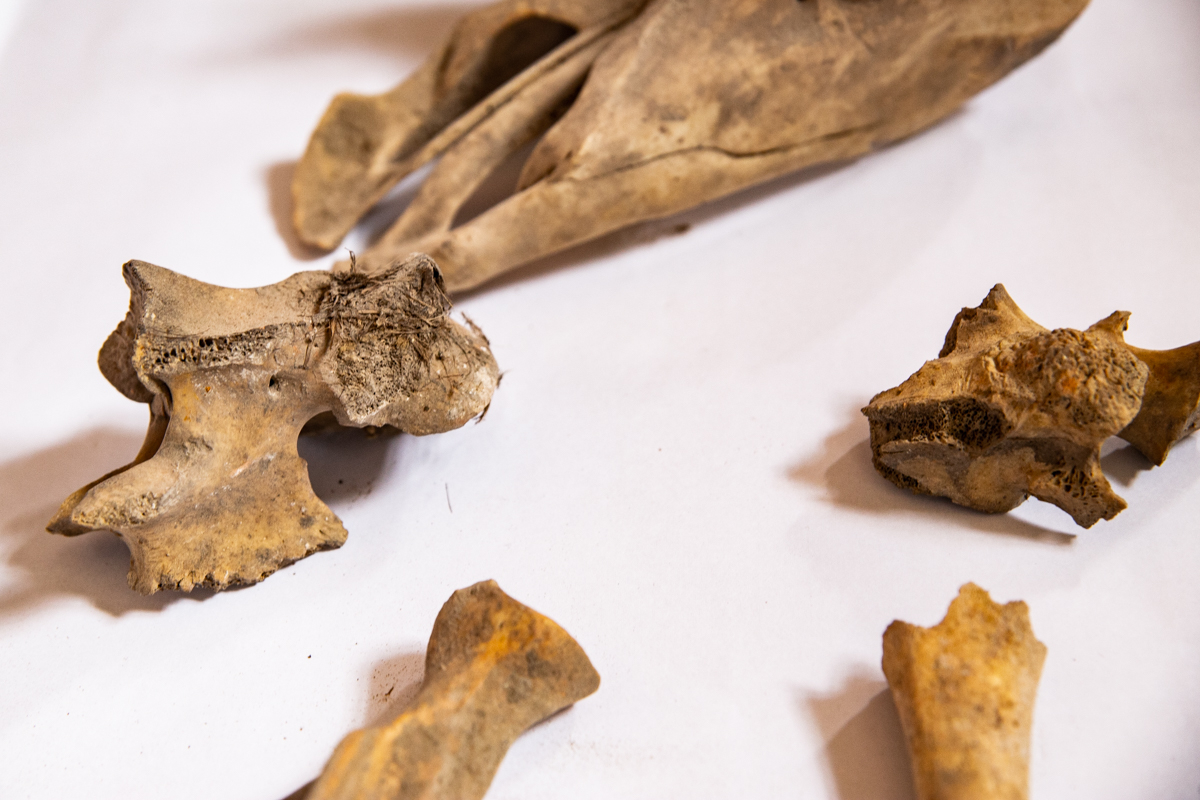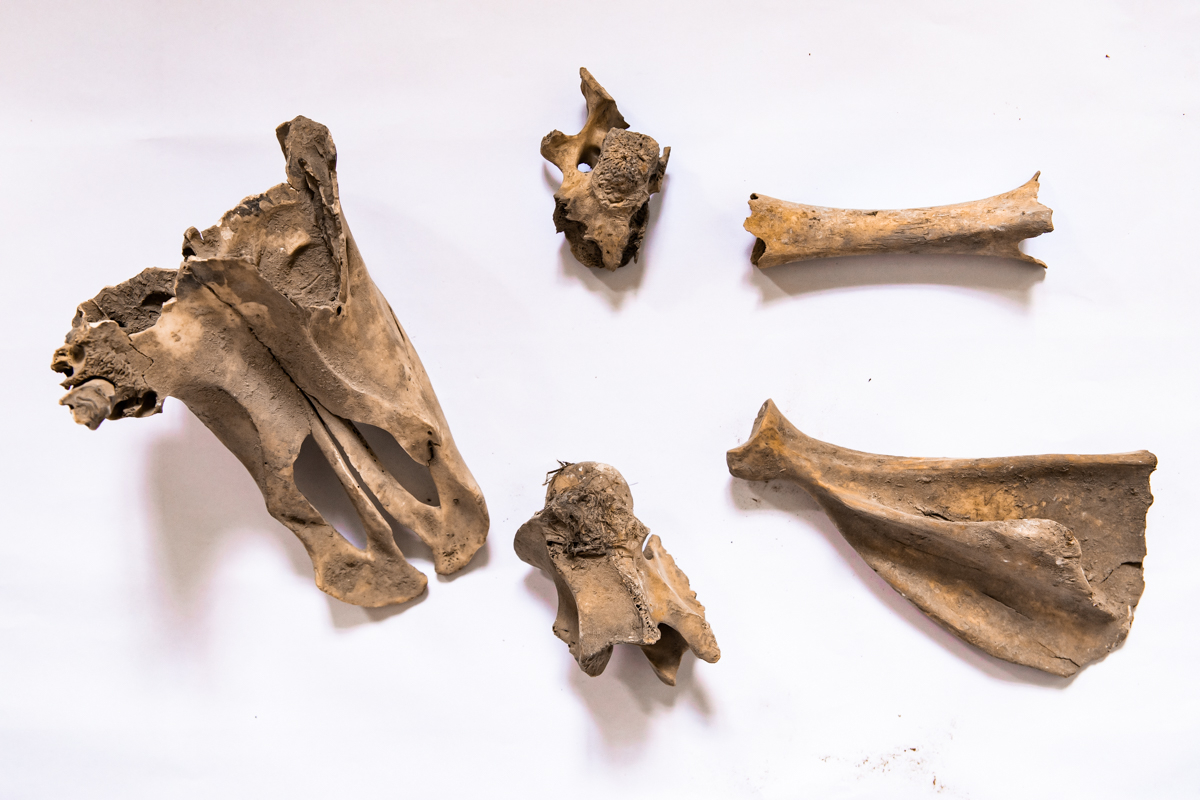Archaeologists from St Petersburg University make over 10,000 finds in the First Cadet Corps
During the restoration of the First Cadet Corps, St Petersburg University archaeologists have found more than 10,000 unique artefacts that can tell about the life of St Petersburgers in the 18th century. Among the unusual objects are sturgeon bones, which will help not only enrich knowledge about the fauna of the past, but also might restore the population of the Red List species.
Since 2019, St Petersburg University has been restoring the Corner Chambers of the Alexander Menshikov Palace on the Universitetskaya Embankment and the building of the First Cadet Corps that was a later extension. During the work, the experts managed to identify the exact shades of the façade of the Menshikov Palace. Its walls were graphite-grey, and they were decorated with white jamb lining, mouldings and pilasters with capitals made of light yellow dolomite. Another unique find was an 18th century ice storage room – a wooden food store, miraculously preserved in the basement of the building.
Experts from the Lebedev Laboratory of Archaeology, Historical Sociology and Cultural Heritage at St Petersburg University are taking an active part in the work. They have been meticulously sifting through the filling from the spandrels between floors, consisting of centuries-old dust and debris. As a result, they have managed to find more than 10,000 unique artefacts of that period: handwritten documents; coins; shoes; fragments of dishes and ceramics; wigs; and much more. Some of them were presented in December at an exhibition in the Twelve Collegia building.
These finds are of great importance. For example, before they were made, our knowledge of the uniforms of the Russian army during the period of Empress Anna Ioannovna had been much more modest.
Kirill Shmelev, a research associate in the Laboratory of Archaeology at St Petersburg University
‘Many items known exclusively from descriptions have been identified. Unfortunately, further work on attribution of collections is now suspended due to the coronavirus pandemic. I am sure that the finds will bring us many more surprises in the future,’ says Kirill Shmelev, a research associate in the Laboratory of Archaeology at St Petersburg University.
One of the unique things among the many items of military uniforms found in the First Cadet Corps was a gaiter of the first half of the 18th century. The men's military fashion of that time involved wearing stockings. At some point, following the English fashion, gaiters made of dense fabric become part of the uniform. They protected the stockings and the tops of the shoes from moisture.
‘In the Russian army, gaiters were officially introduced in 1712. However, there is one detail: this garment was made in various parts of the army locally according to the description. They were usually made from old tents. That is the reason why we had a knowledge of what gaiters looked like solely from descriptions and images. The earliest surviving items date to the period of Catherine the Great’s rule. This is the first item that can be confidently dated to the beginning of the 18th century,’ emphasises Kirill Shmelev.
In addition to the artefacts, the archaeologists have discovered interesting biological objects. Among them are a huge number of oyster shells, which in the 18th to first half of the 19th centuries were widely eaten even by poor residents of St Petersburg. Only later did they become a delicacy.
Other similar finds from the 18th century might be of practical importance. For example, the collection of fish bones of the sturgeon family collected during the work was handed over to a research group that is engaged in a project to restore the Baltic sturgeon population that became extinct at the end of the 20th century. The results of molecular genetic analysis of bones are expected by the end of the year.
‘These studies will help to find out which subspecies of sturgeon was eaten in the Menshikov palace,’ said Igor Tarasov, an associate in the Laboratory of Archaeology at St Petersburg University. ‘If it belonged to the Baltic or Ladoga population of the Atlantic Sturgeon, the genetic material can be used to restore it. In any case, we will receive important information on the history of fishing for this valuable fish species. This will help us understand whether it provided at least part of the needs of St Petersburg’s population or it did not amount to much and the sturgeon served there was brought from other regions of the Russian Empire.’
Another find is still a mystery to the scholars. This is the skull of an animal, presumably a calf or goat, that was found in the wall of the building. Next to it, they found the remains of a textile product – a headwear or a wig. In the nearest future, the skull is planned to be handed over to biologists at St Petersburg University for further research.





